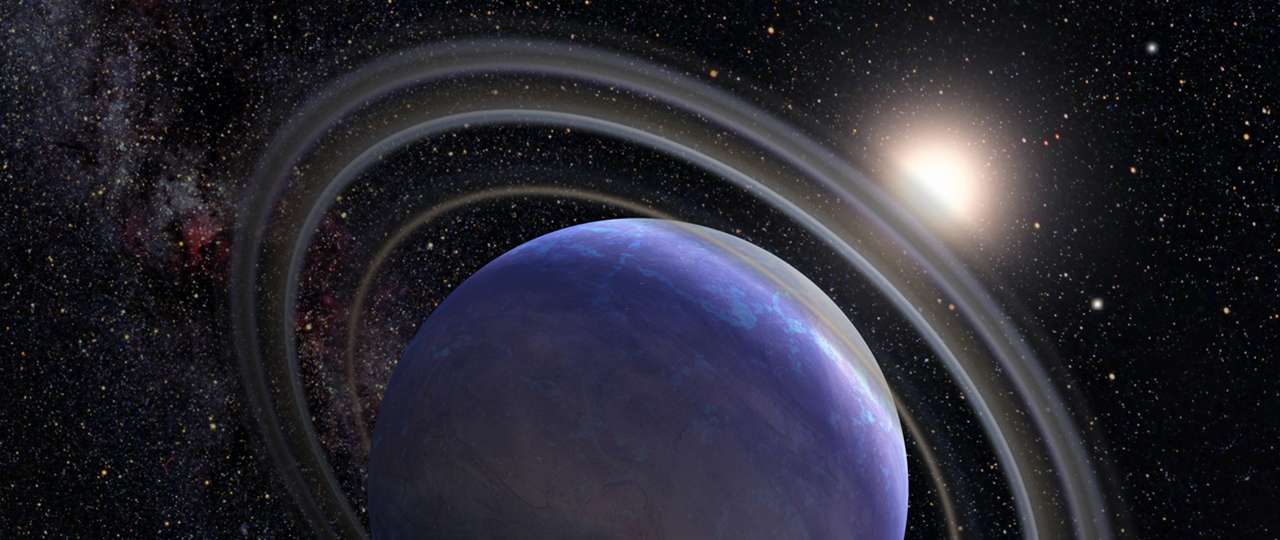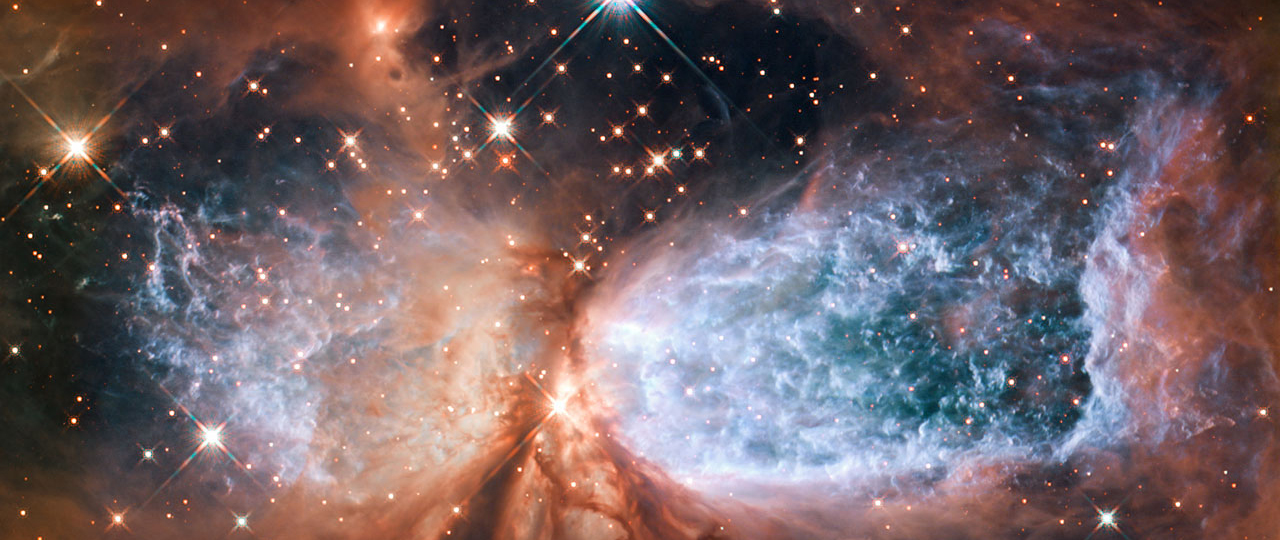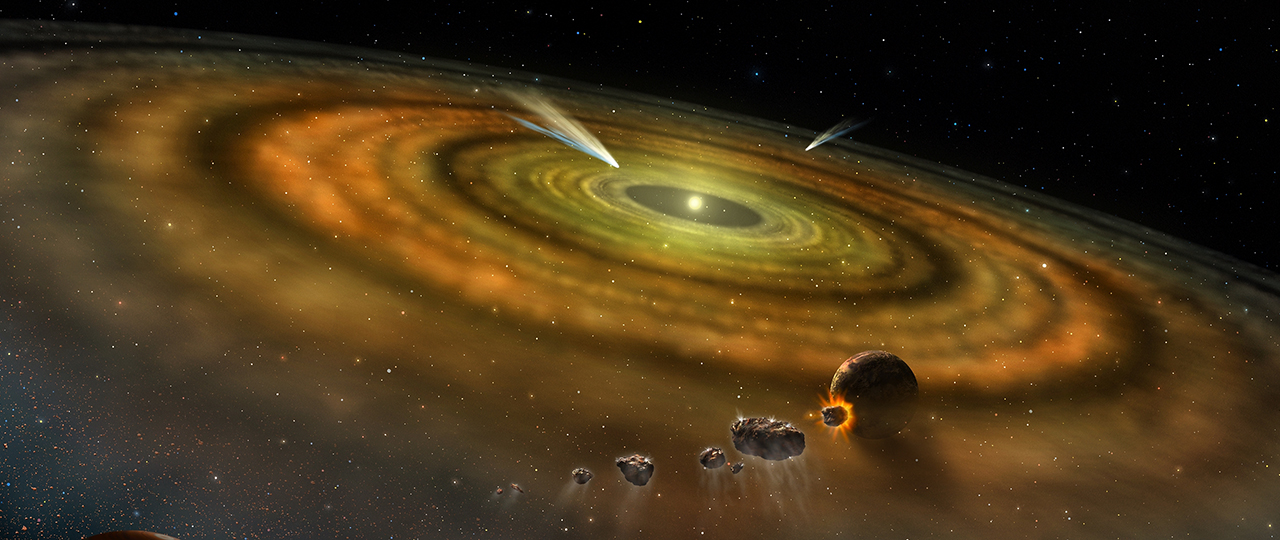Resources
Simulate your own LUVOIR science data through the Tools page.
Observatory Images
LUVOIR-A (15-m telescope diameter) observatory rendering with star field background. Credit: NASA GSFC
LUVOIR-A (15-m telescope diameter) observatory rendering with transparent background. Credit: NASA GSFC
LUVOIR-B (8-m telescope diameter) observatory rendering with transparent background. Credit: NASA GSFC
Rendering of the LUVOIR-B observatory inside a SpaceX Starship launch fairing. Credit: NASA GSFC / SpaceX
Rendering of the LUVOIR-A observatory inside an SLS Block 2 launch fairing. Credit: NASA GSFC / NASA MSFC
Science Images
LUVOIR will revolutionize huge areas of space science. Its sensitivity and spatial resolution open the door to the ultra-faint and ultra-distant regime, enabling detailed observations of the full variety of galaxies. LUVOIR will dramatically increase the sample size and diversity of exoplanets that can be studied, providing dozens of Earth-like exoplanet candidates that can be probed for signs of life (54 with LUVOIR-A and 28 with LUVOIR-B) and hundreds of non-habitable exoplanets (648 with LUVOIR-A and 576 with LUVOIR-B). Finally, LUVOIR will provide near-flyby quality observations of solar system bodies. Hubble Space Telescope (HST) Pluto image from Buie et al. 2010. Credits: NASA / New Horizons / M. Postman (STScI) / A. Roberge (NASA GSFC)
Imaging another Earth. Simulation of the inner solar system in visible light viewed from a distance of 40 light-years with the 15-m LUVOIR-A space telescope concept. The enormous glare from the central star has been suppressed with a coronagraph instrument so the faint planets can be seen. Each planet's atmosphere can be probed with direct spectra to reveal its composition. The simulation assumes realistic noise sources, wavefront errors, and post-processing. Credit: R. Juanola Parramon, N. Zimmerman, A. Roberge (NASA GSFC)
LUVOIR will discover dozens of habitable planet candidates and hundreds of other kinds of exoplanets. The chart shows exoplanet detection yields from an initial 2-year survey optimized for habitable planet candidates with LUVOIR-A (blue bars) and -B (green bars). The first column shows the expected yields of habitable planet candidates. Non-habitable planets are detected concurrently during the 2-year survey. Color photometry is obtained for all planets. Orbits and partial spectra capable of detecting water vapor and/or methane are obtained for all habitable planet candidates. Credit: C. Stark (STScI) / J. Friedlander (NASA GSFC)
LUVOIR can routinely reveal the internal details of galaxies. Simulations of a distant low-mass galaxy (at z=2) imaged with a 2.4-m space telescope (top left), a 39-m future ground-based telescope (top right), and LUVOIR (bottom panels). These simulations all assume the same total exposure time (500 ksec, corresponding to 17 nights for the ground-based simulation). Credits: M. Postman, G. Snyder (STScI)
LUVOIR can monitor individual plumes from solar system ocean moons. The left panel shows an aurora on Europa observed with Hubble (Roth et al. 2014). This UV hydrogen emission comes from dissociation of water vapor in plumes escaping through the moon's ice shell. The center and right panels show simulations of how this emission from Europa might look observed with LUVOIR-B and -A. The moon's surface is bright due to reflected solar hydrogen emission, which was below the background in the Hubble image. Credit: G. Ballester (LPL) / R. Juanola-Parramon (NASA GSFC)
Documents
Recent Reports on LUVOIR-related Science and Technology
- 2018 National Academies of Sciences Astrobiology Science Strategy Report
- 2018 National Academies of Sciences Exoplanet Science Strategy Report
- 2015 COPAG Report on Large Mission Concept Studies
- 2015 ExoPAG Report on Large Mission Concept Studies
- 2015 AURA Report: The High-Definition Space Telescope
- 2013 Astrophysics Roadmap: Enduring Quests, Daring Visions
Science Papers and Presentations
ADS Search- Baseline Requirements for Detecting Biosignatures with the HabEx and LUVOIR Mission Concepts
Wang, J., et al.; 2018, JATIS, 4, 035001 - Exoplanet Classification and Yield Estimates for Direct Imaging Missions
Kopparapu, R. K., et al.; 2018, ApJ, 856, 2 - Maximized ExoEarth Candidate Yields for Starshades
Stark, C. C., et al.; 2016, JATIS, 2 - A Direct Comparison of ExoEarth Yields for Starshades and Coronagraphs
Stark, C. C., et al.; 2016, SPIE, 9904 - Direct Imaging Wavelength Range Implications for Biosignatures
Domagal-Goldman, S.; 14 Jun 2015, ExoPag SIG #1 - Mechanisms for Generating False Positives for Extrasolar Life
Domagal-Goldman, S.; 7 Jan 2015, 225th AAS - Impact of Exozodi on Earth-Like Planet Imaging Telescopes
Roberge, A.; 2015, Pathways to Habitable Planets II Presentation - Lower Limits on Aperture Size for an Exoearth Detecting Coronagraphic Mission
Stark, C. C., et al.; 2015, ApJ, 808, 149 - The Pseudo-Zodi Problem for Edge-On Planetary Systems
Stark, C. C., et al.; 2015, ApJ, 801, 128 - Maximizing the Exoearth Candidate Yield from a Future Direct Imaging Mission
Stark, C. C., et al.; 2014, ApJ, 795, 122
Technology Papers and Presentations
- Extension of ATLAST/LUVOIR's Capabilities to 5 microns, or Beyond
Werner, M., et al.; 2016 - ATLAST: A Potential Large-Aperture UVOIR Space Observatory Reference Design
Thronson, H., et al.; 2016, AAS - Potential Large-Aperture UVOIR Space Observatory enabled by SLS
Stahl, H.P. and Hopkins, R.; 2016, AAS) - Technology Development for the Advanced Technology Large Aperture Space Telescope (ATLAST) as a Candidate Large UV-Optical-InfraRed (LUVOIR) Surveyor
Bolcar, M.; 2015, SPIE - ATLAST ULE Mirror Segment Performance Analytical Predictions Based on Thermally Induced Distortions
Eisenhower, M.; 2015, SPIE - ATLAST Detector Needs for Direct Spectroscopic Biosignature Characterization in the Visible And Near-IR
Rauscher, B.; 2015, SPIE - SLS Launched Missions Concept Studies for LUVOIR Mission
Stahl, H.P.; 2015, SPIE - ATLAST ULE Mirror Segment Performance Analytical Predictions Based on Thermally Induced Distortions
Eisenhower, M., et al.; 2015, SPIE - A Future Large-Aperture UVOIR Space Observatory: Reference Designs
Rioux, N.; 09 Aug 2015, SPIE - A Cost-effective and Serviceable ATLAST 9.2m Telescope Architecture
Feinberg, L., et al.; 2014, SPIE - Optical Engineering: Modular assembled space telescope
Feinberg, L.,et al.; Sep 2013



















